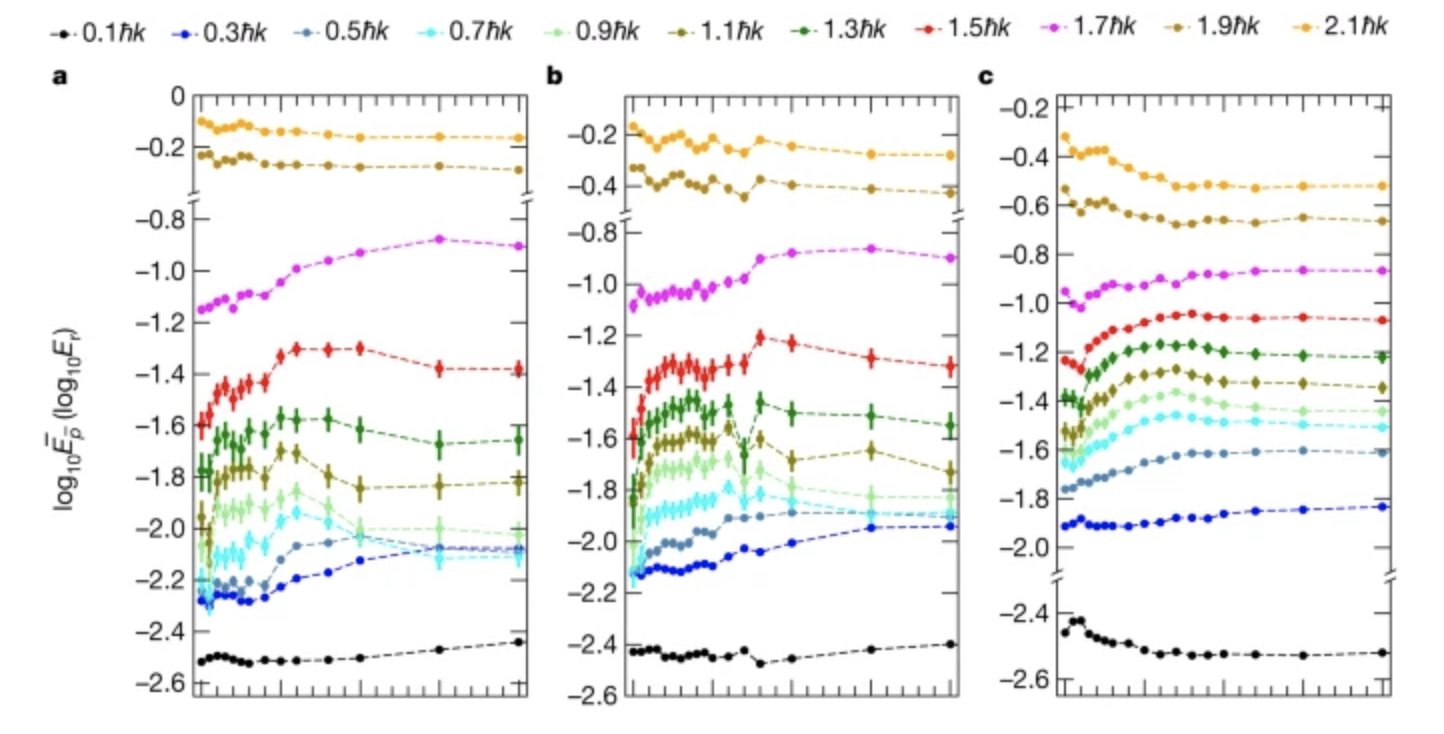Research conducted by:
Yuan Le, graduate student in physics, Penn State, Sarang Gopalakrishnan, assistant professor of electrical and computer engineering, Princeton, Marcos Rigol, professor of physics, Penn State and ICDS co-hire, David S. Weiss, Distinguished Professor of Physics
Tags:
many-body Marcus Rigol quantum systems ultra-cold atoms
Research Summary:
Experiments using one-dimensional gases of ultra-cold atoms reveal a universality in how quantum systems composed of many particles change over time following a large influx of energy that throws the system out of equilibrium. A team of physicists at Penn State showed that these gases immediately respond, “evolving” with features that are common to all “many-body” quantum systems thrown out of equilibrium in this way.
How Roar played a role in this research:
Calculations for the experiment were performed on Roar.
|
Article Title: |
Observation of hydrodynamization and local prethermalization in 1D Bose gases |
|---|---|
|
Published In: |
Nature |
|
Abstract: |
Hydrodynamics accurately describe relativistic heavy-ion collision experiments well before local thermal equilibrium is established1. This unexpectedly rapid onset of hydrodynamics—which takes place on the fastest available timescale—is called hydrodynamization2,3,4. It occurs when an interacting quantum system is quenched with an energy density that is much greater than its ground-state energy density5,6. During hydrodynamization, energy gets redistributed across very different energy scales. Hydrodynamization precedes local equilibration among momentum modes5, which is local prethermalization to a generalized Gibbs ensemble7,8 in nearly integrable systems or local thermalization in non-integrable systems9. Although many theories of quantum dynamics postulate local prethermalization10,11, the associated timescale has not been studied experimentally. Here we use an array of one-dimensional Bose gases to directly observe both hydrodynamization and local prethermalization. After we apply a Bragg scattering pulse, hydrodynamization is evident in the fast redistribution of energy among distant momentum modes, which occurs on timescales associated with the Bragg peak energies. Local prethermalization can be seen in the slower redistribution of occupation among nearby momentum modes. We find that the timescale for local prethermalization in our system is inversely proportional to the momenta involved. During hydrodynamization and local prethermalization, existing theories cannot quantitatively model our experiment. Exact theoretical calculations in the Tonks–Girardeau limit12 show qualitatively similar features. View article on publisher's website |

